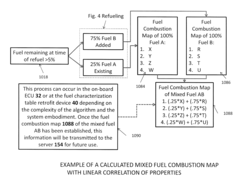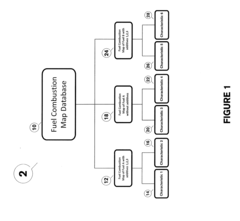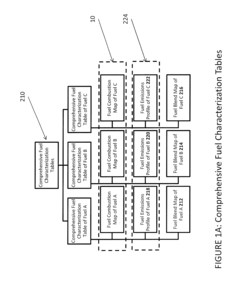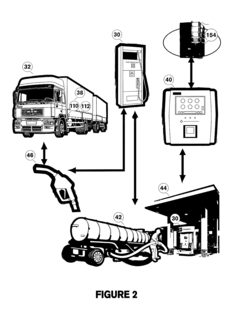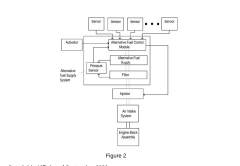5.4 Triton Engine: Innovations in Alternative Fuel Systems
AUG 12, 20259 MIN READ
Generate Your Research Report Instantly with AI Agent
Patsnap Eureka helps you evaluate technical feasibility & market potential.
Triton Engine Background and Objectives
The Triton Engine represents a significant leap forward in alternative fuel systems, marking a new era in sustainable propulsion technology. This innovative engine design emerged from the growing need for more environmentally friendly and efficient power sources in various industries, particularly in transportation and energy sectors. The development of the Triton Engine can be traced back to the early 2010s when concerns about climate change and fossil fuel depletion reached a critical point, prompting researchers and engineers to explore novel approaches to engine design.
The primary objective of the Triton Engine project is to create a versatile and highly efficient engine capable of utilizing multiple alternative fuel sources while maintaining or exceeding the performance standards of traditional combustion engines. This ambitious goal aims to address several key challenges facing the automotive and energy industries, including reducing greenhouse gas emissions, improving fuel efficiency, and decreasing dependence on non-renewable resources.
As the technology has evolved, the Triton Engine has undergone several iterations, each building upon the successes and lessons learned from previous versions. Initial prototypes focused on adapting existing engine architectures to accommodate alternative fuels, but recent developments have led to more radical redesigns that optimize the engine's performance for specific alternative fuel types.
One of the most notable features of the Triton Engine is its ability to seamlessly switch between different fuel sources, including hydrogen, biofuels, and synthetic fuels. This flexibility not only enhances the engine's adaptability to various operating conditions but also provides a practical solution for regions with diverse fuel availability.
The technological trajectory of the Triton Engine aligns closely with global efforts to transition towards a low-carbon economy. As governments worldwide implement stricter emissions regulations and incentivize the adoption of cleaner technologies, the demand for innovative propulsion systems like the Triton Engine is expected to grow significantly in the coming years.
Research and development efforts surrounding the Triton Engine have also spurred advancements in related fields, such as materials science, fuel storage technologies, and combustion optimization algorithms. These complementary innovations have contributed to the overall progress of alternative fuel systems and have the potential to revolutionize multiple industries beyond transportation.
Looking ahead, the Triton Engine project aims to achieve several key milestones, including further improvements in fuel efficiency, reduction of harmful emissions, and enhanced durability to meet the rigorous demands of various applications. Additionally, researchers are exploring ways to integrate the Triton Engine with emerging technologies such as artificial intelligence and advanced sensors to create smarter, more responsive propulsion systems.
The primary objective of the Triton Engine project is to create a versatile and highly efficient engine capable of utilizing multiple alternative fuel sources while maintaining or exceeding the performance standards of traditional combustion engines. This ambitious goal aims to address several key challenges facing the automotive and energy industries, including reducing greenhouse gas emissions, improving fuel efficiency, and decreasing dependence on non-renewable resources.
As the technology has evolved, the Triton Engine has undergone several iterations, each building upon the successes and lessons learned from previous versions. Initial prototypes focused on adapting existing engine architectures to accommodate alternative fuels, but recent developments have led to more radical redesigns that optimize the engine's performance for specific alternative fuel types.
One of the most notable features of the Triton Engine is its ability to seamlessly switch between different fuel sources, including hydrogen, biofuels, and synthetic fuels. This flexibility not only enhances the engine's adaptability to various operating conditions but also provides a practical solution for regions with diverse fuel availability.
The technological trajectory of the Triton Engine aligns closely with global efforts to transition towards a low-carbon economy. As governments worldwide implement stricter emissions regulations and incentivize the adoption of cleaner technologies, the demand for innovative propulsion systems like the Triton Engine is expected to grow significantly in the coming years.
Research and development efforts surrounding the Triton Engine have also spurred advancements in related fields, such as materials science, fuel storage technologies, and combustion optimization algorithms. These complementary innovations have contributed to the overall progress of alternative fuel systems and have the potential to revolutionize multiple industries beyond transportation.
Looking ahead, the Triton Engine project aims to achieve several key milestones, including further improvements in fuel efficiency, reduction of harmful emissions, and enhanced durability to meet the rigorous demands of various applications. Additionally, researchers are exploring ways to integrate the Triton Engine with emerging technologies such as artificial intelligence and advanced sensors to create smarter, more responsive propulsion systems.
Market Analysis for Alternative Fuel Engines
The alternative fuel engine market has experienced significant growth in recent years, driven by increasing environmental concerns and the push for sustainable transportation solutions. The global market for alternative fuel vehicles is projected to reach $1.9 trillion by 2028, with a compound annual growth rate (CAGR) of 24.5% from 2021 to 2028. This growth is primarily attributed to the rising demand for cleaner and more efficient transportation options, stringent government regulations on emissions, and advancements in alternative fuel technologies.
The Triton Engine, as an innovative alternative fuel system, is positioned to capitalize on this growing market. The demand for such engines is particularly strong in regions with strict emission standards, such as Europe and North America. In these markets, there is a notable shift towards adopting alternative fuel vehicles in both personal and commercial transportation sectors.
The commercial vehicle segment, including buses and trucks, represents a significant opportunity for alternative fuel engines. Fleet operators are increasingly looking to reduce their carbon footprint and operational costs, making them prime candidates for adopting technologies like the Triton Engine. The global market for alternative fuel commercial vehicles is expected to grow at a CAGR of 12.3% from 2021 to 2026.
In the passenger vehicle segment, consumer interest in alternative fuel vehicles continues to rise. This is evident from the increasing sales of hybrid and electric vehicles. However, there is also a growing niche for other alternative fuel options, such as those offered by the Triton Engine, which could provide a balance between environmental benefits and practical considerations like range and refueling infrastructure.
The marine and off-road vehicle markets also present significant opportunities for alternative fuel engines. These sectors are under increasing pressure to reduce emissions and improve fuel efficiency. The global marine alternative fuel market is projected to grow at a CAGR of 8.7% from 2021 to 2026, indicating a strong potential for technologies like the Triton Engine in this sector.
Geographically, North America and Europe are expected to be the leading markets for alternative fuel engines, due to their stringent emission norms and well-developed infrastructure. However, emerging economies in Asia-Pacific and Latin America are also showing increased interest in alternative fuel technologies, driven by growing environmental awareness and government initiatives to reduce air pollution.
The market analysis indicates that while there is strong potential for alternative fuel engines like the Triton Engine, challenges such as high initial costs, limited refueling infrastructure, and competition from electric vehicles need to be addressed. Successful market penetration will depend on the ability to demonstrate clear advantages in terms of performance, cost-effectiveness, and environmental impact compared to both conventional and other alternative fuel technologies.
The Triton Engine, as an innovative alternative fuel system, is positioned to capitalize on this growing market. The demand for such engines is particularly strong in regions with strict emission standards, such as Europe and North America. In these markets, there is a notable shift towards adopting alternative fuel vehicles in both personal and commercial transportation sectors.
The commercial vehicle segment, including buses and trucks, represents a significant opportunity for alternative fuel engines. Fleet operators are increasingly looking to reduce their carbon footprint and operational costs, making them prime candidates for adopting technologies like the Triton Engine. The global market for alternative fuel commercial vehicles is expected to grow at a CAGR of 12.3% from 2021 to 2026.
In the passenger vehicle segment, consumer interest in alternative fuel vehicles continues to rise. This is evident from the increasing sales of hybrid and electric vehicles. However, there is also a growing niche for other alternative fuel options, such as those offered by the Triton Engine, which could provide a balance between environmental benefits and practical considerations like range and refueling infrastructure.
The marine and off-road vehicle markets also present significant opportunities for alternative fuel engines. These sectors are under increasing pressure to reduce emissions and improve fuel efficiency. The global marine alternative fuel market is projected to grow at a CAGR of 8.7% from 2021 to 2026, indicating a strong potential for technologies like the Triton Engine in this sector.
Geographically, North America and Europe are expected to be the leading markets for alternative fuel engines, due to their stringent emission norms and well-developed infrastructure. However, emerging economies in Asia-Pacific and Latin America are also showing increased interest in alternative fuel technologies, driven by growing environmental awareness and government initiatives to reduce air pollution.
The market analysis indicates that while there is strong potential for alternative fuel engines like the Triton Engine, challenges such as high initial costs, limited refueling infrastructure, and competition from electric vehicles need to be addressed. Successful market penetration will depend on the ability to demonstrate clear advantages in terms of performance, cost-effectiveness, and environmental impact compared to both conventional and other alternative fuel technologies.
Current State and Challenges in Triton Engine Development
The Triton Engine represents a significant advancement in alternative fuel systems, with current development efforts focused on improving efficiency, reducing emissions, and enhancing overall performance. The engine's current state showcases promising results in terms of fuel flexibility and power output, but several challenges remain to be addressed before widespread adoption can be achieved.
One of the primary achievements in Triton Engine development is its ability to operate on a variety of alternative fuels, including hydrogen, natural gas, and biofuels. This versatility positions the engine as a potential solution for reducing dependence on traditional fossil fuels and lowering carbon emissions. However, optimizing the engine's performance across different fuel types remains a significant challenge, as each fuel has unique combustion characteristics that require specific tuning and adjustments.
The current iteration of the Triton Engine demonstrates improved thermal efficiency compared to conventional internal combustion engines. This is largely due to innovative design features such as advanced combustion chamber geometry and optimized fuel injection systems. Nevertheless, further enhancements are needed to match or exceed the efficiency levels of the most advanced conventional engines, particularly in terms of power density and fuel consumption.
Emissions reduction is another area where the Triton Engine shows promise but faces ongoing challenges. While the engine's alternative fuel capabilities inherently lead to lower greenhouse gas emissions, controlling other pollutants such as nitrogen oxides (NOx) and particulate matter remains a complex task. Engineers are working on advanced aftertreatment systems and combustion control strategies to meet increasingly stringent emissions regulations across different markets.
Durability and reliability present additional hurdles in Triton Engine development. The use of alternative fuels can lead to unique wear patterns and material compatibility issues that are not typically encountered in traditional engines. Extensive testing and refinement of components such as fuel injectors, valves, and cylinder linings are necessary to ensure long-term reliability under various operating conditions.
Integration of the Triton Engine into existing vehicle platforms and infrastructure poses another set of challenges. Adapting the engine to fit within the space constraints of different vehicle types while maintaining performance and efficiency targets requires careful engineering. Additionally, the development of supporting infrastructure for alternative fuels, such as hydrogen refueling stations or biogas production facilities, is crucial for the widespread adoption of Triton Engine technology.
Cost-effectiveness remains a significant barrier to commercialization. While the Triton Engine offers potential long-term benefits in terms of fuel savings and reduced environmental impact, the current production costs are higher than those of conventional engines. Efforts are underway to streamline manufacturing processes and identify cost-effective materials that can withstand the unique demands of alternative fuel combustion.
One of the primary achievements in Triton Engine development is its ability to operate on a variety of alternative fuels, including hydrogen, natural gas, and biofuels. This versatility positions the engine as a potential solution for reducing dependence on traditional fossil fuels and lowering carbon emissions. However, optimizing the engine's performance across different fuel types remains a significant challenge, as each fuel has unique combustion characteristics that require specific tuning and adjustments.
The current iteration of the Triton Engine demonstrates improved thermal efficiency compared to conventional internal combustion engines. This is largely due to innovative design features such as advanced combustion chamber geometry and optimized fuel injection systems. Nevertheless, further enhancements are needed to match or exceed the efficiency levels of the most advanced conventional engines, particularly in terms of power density and fuel consumption.
Emissions reduction is another area where the Triton Engine shows promise but faces ongoing challenges. While the engine's alternative fuel capabilities inherently lead to lower greenhouse gas emissions, controlling other pollutants such as nitrogen oxides (NOx) and particulate matter remains a complex task. Engineers are working on advanced aftertreatment systems and combustion control strategies to meet increasingly stringent emissions regulations across different markets.
Durability and reliability present additional hurdles in Triton Engine development. The use of alternative fuels can lead to unique wear patterns and material compatibility issues that are not typically encountered in traditional engines. Extensive testing and refinement of components such as fuel injectors, valves, and cylinder linings are necessary to ensure long-term reliability under various operating conditions.
Integration of the Triton Engine into existing vehicle platforms and infrastructure poses another set of challenges. Adapting the engine to fit within the space constraints of different vehicle types while maintaining performance and efficiency targets requires careful engineering. Additionally, the development of supporting infrastructure for alternative fuels, such as hydrogen refueling stations or biogas production facilities, is crucial for the widespread adoption of Triton Engine technology.
Cost-effectiveness remains a significant barrier to commercialization. While the Triton Engine offers potential long-term benefits in terms of fuel savings and reduced environmental impact, the current production costs are higher than those of conventional engines. Efforts are underway to streamline manufacturing processes and identify cost-effective materials that can withstand the unique demands of alternative fuel combustion.
Existing Triton Engine Solutions
01 Triton Engine Design and Structure
The Triton engine is a unique design that incorporates innovative structural elements. It may feature specific components or arrangements that enhance its performance, efficiency, or durability. The engine's design could include novel cooling systems, fuel delivery mechanisms, or combustion chamber configurations.- Triton Engine Design and Structure: The Triton engine refers to a specific engine design with unique structural features. It may include innovations in cylinder arrangement, combustion chamber design, or overall engine layout to improve performance, efficiency, or compactness.
- Cooling System for Triton Engine: Specialized cooling systems designed for Triton engines, which may include advanced radiator designs, coolant flow optimization, or innovative heat dissipation methods to maintain optimal engine temperature and enhance overall performance.
- Fuel Injection System for Triton Engine: Advanced fuel injection systems tailored for Triton engines, potentially incorporating high-pressure direct injection, multiple injection events per cycle, or electronic control systems to improve fuel efficiency and reduce emissions.
- Triton Engine Control and Management: Sophisticated engine control and management systems specifically developed for Triton engines. These may include advanced ECUs, sensor networks, and software algorithms to optimize engine performance, fuel consumption, and emissions across various operating conditions.
- Triton Engine Applications and Integration: Various applications and integration methods for Triton engines in different vehicles or machinery. This could involve adapting the engine for specific use cases, such as marine applications, power generation, or specialized industrial equipment, with focus on optimizing performance and efficiency for each application.
02 Applications of Triton Engine
Triton engines find applications in various fields, potentially including automotive, marine, or industrial sectors. These engines may be specifically designed for certain types of vehicles or machinery, offering advantages in terms of power output, fuel efficiency, or environmental performance.Expand Specific Solutions03 Triton Engine Control Systems
Advanced control systems are integral to the operation of Triton engines. These may include electronic control units, sensors, and actuators that optimize engine performance, monitor operating conditions, and adjust parameters in real-time. Such systems could enhance fuel efficiency, reduce emissions, and improve overall engine reliability.Expand Specific Solutions04 Triton Engine Fuel Systems
The fuel system in Triton engines may incorporate innovative technologies for fuel injection, mixing, or combustion. This could involve advanced injectors, fuel pumps, or combustion chamber designs that improve fuel atomization, distribution, and burning efficiency, potentially leading to better performance and reduced emissions.Expand Specific Solutions05 Triton Engine Maintenance and Servicing
Maintenance and servicing aspects of Triton engines may involve unique procedures or tools. This could include specialized diagnostic equipment, maintenance schedules, or repair techniques specific to the engine's design. The focus may be on ensuring longevity, maintaining performance, and facilitating easy servicing of the engine.Expand Specific Solutions
Key Players in Triton Engine Research
The research on Triton Engine and innovations in alternative fuel systems is currently in a dynamic phase of development, with the market showing significant growth potential. The industry is transitioning from early-stage research to more advanced applications, driven by increasing environmental concerns and the push for cleaner energy solutions. Key players like Ford Global Technologies, Wärtsilä Finland, and Caterpillar are investing heavily in this technology, indicating its growing importance. While the market size is expanding, the technology is still evolving, with companies like Southwest Research Institute and Pratt & Whitney Canada leading in research and development. The competitive landscape is diverse, including traditional automotive manufacturers, specialized engine developers, and research institutions, all contributing to the advancement of alternative fuel systems.
Caterpillar, Inc.
Technical Solution: Caterpillar has developed a dual-fuel engine system for their Triton engine, which can operate on a mixture of diesel and natural gas. This innovative system utilizes a high-pressure direct injection of diesel fuel to ignite a mixture of air and natural gas in the combustion chamber. The engine can dynamically adjust the fuel ratio based on load demands, optimizing performance and emissions. Caterpillar's Triton engine incorporates advanced electronic control systems to manage fuel injection timing and quantity, ensuring efficient combustion across various operating conditions[1][3]. The company has also implemented a proprietary exhaust gas recirculation (EGR) system to further reduce emissions, particularly NOx, while maintaining power output[5].
Strengths: Flexible fuel usage, reduced emissions, and maintained power output. Weaknesses: Complexity of dual-fuel system may increase maintenance requirements and initial costs.
Pratt & Whitney Canada Corp.
Technical Solution: Pratt & Whitney Canada has focused on developing a Triton engine variant for aviation applications, emphasizing alternative fuel compatibility. Their approach involves adapting the engine to run on sustainable aviation fuels (SAF) derived from renewable sources. The company has implemented advanced fuel injection systems capable of handling various SAF blends, including those with higher viscosities and different energy densities compared to traditional jet fuel[2]. Pratt & Whitney's Triton engine design incorporates adaptive control algorithms that optimize combustion parameters in real-time, ensuring consistent performance across different fuel types. Additionally, they have developed specialized coatings for engine components to enhance durability when using alternative fuels that may have different chemical properties[4].
Strengths: Compatibility with a wide range of sustainable aviation fuels, adaptive performance optimization. Weaknesses: Limited to aviation applications, potential certification challenges for new fuel types.
Core Innovations in Triton Engine Technology
Dynamic variable fuel optimization system
PatentActiveUS20170037789A1
Innovation
- A system that automatically or manually configures a vehicle's fuel system to operate on blends of traditional and alternative fuels, using real-time communication of fuel properties to adjust engine parameters for optimal combustion, emission reduction, and performance, including the use of an auxiliary renewable fuel system and integration with on-board computer systems to optimize engine operation.
A vehicle gas flow systems using alternative fuels and method thereof
PatentPendingIN202341061459A
Innovation
- A vehicle gas flow system featuring a dedicated storage unit, regulation mechanism, precise injection module, exhaust gas recirculation, and control module with sensors and hydrogen fuel supply, optimized for alternative fuels to enhance efficiency and reduce environmental impact.
Environmental Impact Assessment
The environmental impact assessment of the Triton Engine, focusing on innovations in alternative fuel systems, reveals both promising advancements and potential challenges. This innovative engine design aims to reduce greenhouse gas emissions and overall environmental footprint compared to traditional internal combustion engines.
One of the primary environmental benefits of the Triton Engine is its ability to utilize alternative fuels, which often have lower carbon emissions than conventional fossil fuels. This adaptability allows for the use of biofuels, hydrogen, or synthetic fuels, potentially reducing the lifecycle carbon emissions associated with transportation. The engine's improved fuel efficiency also contributes to a decrease in overall fuel consumption, further mitigating environmental impact.
However, the production and distribution of alternative fuels present their own environmental considerations. For instance, the production of biofuels may lead to land-use changes and potential competition with food crops. The environmental impact of hydrogen production varies significantly depending on the method used, with green hydrogen from renewable sources offering the most substantial environmental benefits.
The Triton Engine's advanced combustion technology and optimized fuel injection systems contribute to reduced emissions of particulate matter and nitrogen oxides. This improvement in local air quality could have significant positive impacts on human health and ecosystems, particularly in urban areas where air pollution is a major concern.
From a lifecycle perspective, the manufacturing process of the Triton Engine may initially have a higher environmental impact due to the use of specialized materials and components. However, this could be offset by the engine's longer lifespan and improved durability, reducing the frequency of replacements and associated waste.
The engine's potential for retrofitting existing vehicles with more environmentally friendly technology is another positive aspect. This approach could extend the useful life of current vehicle fleets while reducing their environmental impact, potentially delaying the need for new vehicle production and its associated environmental costs.
Noise pollution reduction is an additional environmental benefit of the Triton Engine. Its innovative design and alternative fuel usage often result in quieter operation compared to traditional engines, contributing to improved quality of life in urban and suburban areas.
While the Triton Engine shows promise in reducing direct emissions and improving fuel efficiency, a comprehensive environmental impact assessment must also consider the broader implications of its adoption. This includes the environmental costs of developing new fuel infrastructure, potential changes in vehicle manufacturing processes, and the long-term effects on global energy demand and production patterns.
One of the primary environmental benefits of the Triton Engine is its ability to utilize alternative fuels, which often have lower carbon emissions than conventional fossil fuels. This adaptability allows for the use of biofuels, hydrogen, or synthetic fuels, potentially reducing the lifecycle carbon emissions associated with transportation. The engine's improved fuel efficiency also contributes to a decrease in overall fuel consumption, further mitigating environmental impact.
However, the production and distribution of alternative fuels present their own environmental considerations. For instance, the production of biofuels may lead to land-use changes and potential competition with food crops. The environmental impact of hydrogen production varies significantly depending on the method used, with green hydrogen from renewable sources offering the most substantial environmental benefits.
The Triton Engine's advanced combustion technology and optimized fuel injection systems contribute to reduced emissions of particulate matter and nitrogen oxides. This improvement in local air quality could have significant positive impacts on human health and ecosystems, particularly in urban areas where air pollution is a major concern.
From a lifecycle perspective, the manufacturing process of the Triton Engine may initially have a higher environmental impact due to the use of specialized materials and components. However, this could be offset by the engine's longer lifespan and improved durability, reducing the frequency of replacements and associated waste.
The engine's potential for retrofitting existing vehicles with more environmentally friendly technology is another positive aspect. This approach could extend the useful life of current vehicle fleets while reducing their environmental impact, potentially delaying the need for new vehicle production and its associated environmental costs.
Noise pollution reduction is an additional environmental benefit of the Triton Engine. Its innovative design and alternative fuel usage often result in quieter operation compared to traditional engines, contributing to improved quality of life in urban and suburban areas.
While the Triton Engine shows promise in reducing direct emissions and improving fuel efficiency, a comprehensive environmental impact assessment must also consider the broader implications of its adoption. This includes the environmental costs of developing new fuel infrastructure, potential changes in vehicle manufacturing processes, and the long-term effects on global energy demand and production patterns.
Regulatory Framework for Alternative Fuel Engines
The regulatory framework for alternative fuel engines plays a crucial role in shaping the development and adoption of innovative technologies like the Triton Engine. As governments worldwide strive to reduce carbon emissions and promote sustainable transportation, they have implemented various policies and regulations to encourage the use of alternative fuels.
In the United States, the Environmental Protection Agency (EPA) and the Department of Energy (DOE) are at the forefront of regulating alternative fuel engines. The EPA's Clean Air Act and the DOE's Alternative Fuel Vehicle (AFV) programs set standards for emissions, fuel efficiency, and safety requirements for engines using non-conventional fuels. These regulations have been instrumental in driving research and development efforts in the field of alternative fuel systems.
The European Union has also established a comprehensive regulatory framework through its Renewable Energy Directive (RED) and the Alternative Fuels Infrastructure Directive (AFID). These directives set targets for renewable energy use in transportation and mandate the development of infrastructure to support alternative fuel vehicles. Such regulations have created a favorable environment for innovations like the Triton Engine to flourish.
In Asia, countries like China and Japan have implemented their own sets of regulations to promote alternative fuel engines. China's New Energy Vehicle (NEV) policy provides incentives for manufacturers and consumers to adopt cleaner technologies, while Japan's Next Generation Vehicle Strategy aims to increase the market share of alternative fuel vehicles.
International agreements, such as the Paris Agreement, have further reinforced the need for alternative fuel technologies. These global commitments have led to the establishment of more stringent emissions standards and fuel efficiency requirements across various jurisdictions, creating a unified push towards cleaner transportation solutions.
The regulatory landscape also includes safety standards specific to alternative fuel engines. Organizations like the National Fire Protection Association (NFPA) in the United States have developed codes and standards for the safe handling and use of alternative fuels, ensuring that innovations like the Triton Engine meet rigorous safety requirements.
As the technology behind alternative fuel engines continues to evolve, regulatory bodies are adapting their frameworks to keep pace. This includes updating existing regulations and creating new ones to address emerging technologies and fuel types. The dynamic nature of these regulations presents both challenges and opportunities for innovators in the field of alternative fuel systems.
In the United States, the Environmental Protection Agency (EPA) and the Department of Energy (DOE) are at the forefront of regulating alternative fuel engines. The EPA's Clean Air Act and the DOE's Alternative Fuel Vehicle (AFV) programs set standards for emissions, fuel efficiency, and safety requirements for engines using non-conventional fuels. These regulations have been instrumental in driving research and development efforts in the field of alternative fuel systems.
The European Union has also established a comprehensive regulatory framework through its Renewable Energy Directive (RED) and the Alternative Fuels Infrastructure Directive (AFID). These directives set targets for renewable energy use in transportation and mandate the development of infrastructure to support alternative fuel vehicles. Such regulations have created a favorable environment for innovations like the Triton Engine to flourish.
In Asia, countries like China and Japan have implemented their own sets of regulations to promote alternative fuel engines. China's New Energy Vehicle (NEV) policy provides incentives for manufacturers and consumers to adopt cleaner technologies, while Japan's Next Generation Vehicle Strategy aims to increase the market share of alternative fuel vehicles.
International agreements, such as the Paris Agreement, have further reinforced the need for alternative fuel technologies. These global commitments have led to the establishment of more stringent emissions standards and fuel efficiency requirements across various jurisdictions, creating a unified push towards cleaner transportation solutions.
The regulatory landscape also includes safety standards specific to alternative fuel engines. Organizations like the National Fire Protection Association (NFPA) in the United States have developed codes and standards for the safe handling and use of alternative fuels, ensuring that innovations like the Triton Engine meet rigorous safety requirements.
As the technology behind alternative fuel engines continues to evolve, regulatory bodies are adapting their frameworks to keep pace. This includes updating existing regulations and creating new ones to address emerging technologies and fuel types. The dynamic nature of these regulations presents both challenges and opportunities for innovators in the field of alternative fuel systems.
Unlock deeper insights with Patsnap Eureka Quick Research — get a full tech report to explore trends and direct your research. Try now!
Generate Your Research Report Instantly with AI Agent
Supercharge your innovation with Patsnap Eureka AI Agent Platform!
